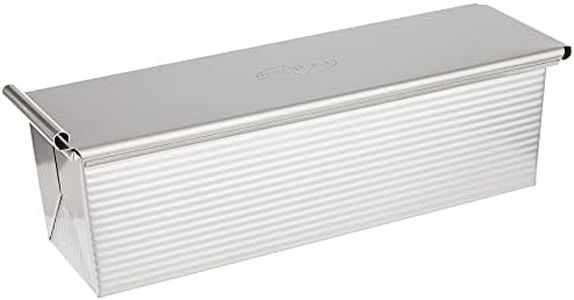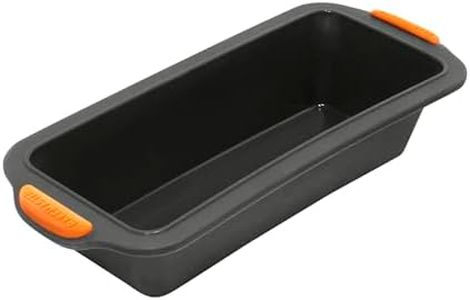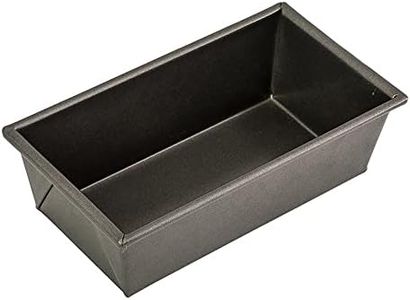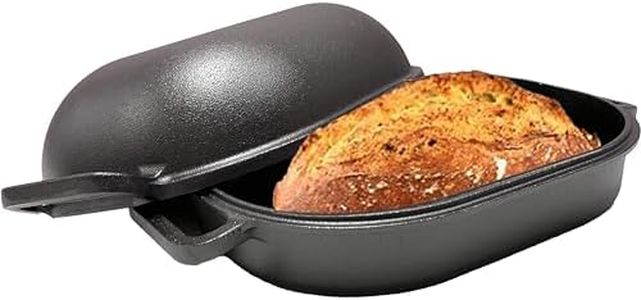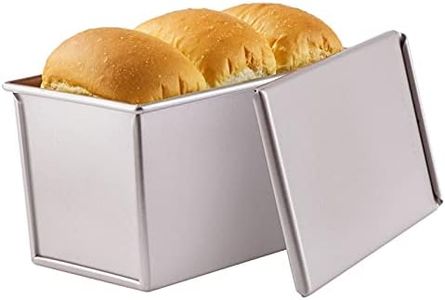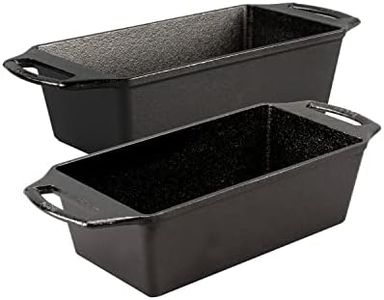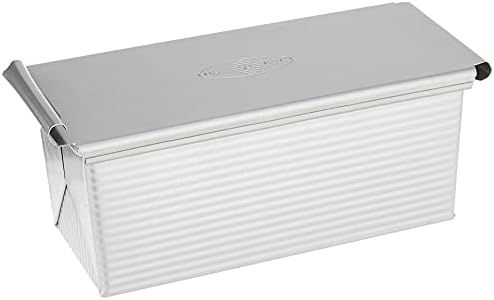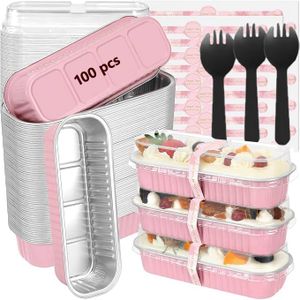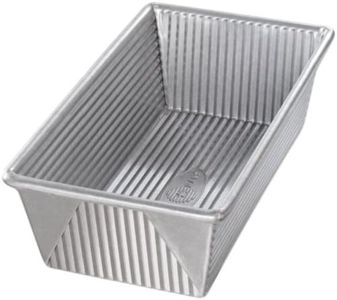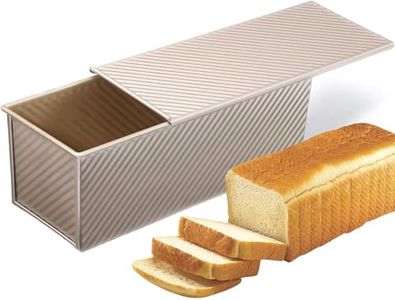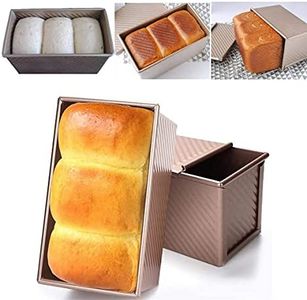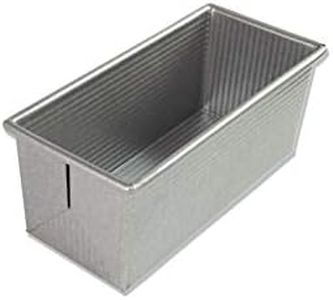We Use CookiesWe use cookies to enhance the security, performance,
functionality and for analytical and promotional activities. By continuing to browse this site you
are agreeing to our privacy policy
10 Best Loaf Pans
From leading brands and best sellers available on the web.Buying Guide for the Best Loaf Pans
Choosing the right loaf pan is important if you want consistently good results when baking breads, cakes, or meatloaves. The type and size of pan can affect the way your food bakes, and the material can influence both the crust and the inside texture. Before you buy, it helps to think about what you plan to make most often, how much you want to bake at once, and how easy you want cleanup to be. Here’s what you need to consider:MaterialMaterial refers to what the loaf pan is made from. Common options include metal (often aluminum or steel), glass, silicone, and ceramic. Metal pans conduct heat efficiently, giving a crispier crust, which is great for bread, but can brown cakes quickly. Glass heats up more slowly but retains heat, which can help with even cooking but may require adjusting your oven temperature. Silicone is nonstick and flexible, making it easy to release baked goods, but sometimes leads to less browning. Ceramic provides even heating but is heavier and may take longer to bake. Choose metal for crusty breads, glass for even baking, and silicone or ceramic if easy release and presentation matter more to you.
Size/CapacitySize or capacity is the actual dimensions or volume the pan can hold, often given in inches (like 8.5 x 4.5 inches or 9 x 5 inches) or by how many cups it contains. Standard recipes usually call for a typical size, so using a pan that’s too large or small can affect how high your loaf rises or how quickly it bakes. For classic sandwich bread, a standard loaf pan works best, while mini pans are best for gifting or small batches. Consider what kinds and amounts of food you want to bake—choose standard sizes for versatility, larger for big batches, or mini for individual servings.
Nonstick CoatingA nonstick coating makes it easier to release your bread or cake from the pan and simplifies cleanup. However, some bakers prefer uncoated pans for better crust development or because they last longer. If you’re new to baking or want convenience, a nonstick pan can save a lot of hassle. If you like to bake rustic or sourdough loaves where crust is key, an uncoated metal pan might be a better fit.
ShapeThe shape refers to how straight or rounded the corners and sides of the loaf pan are. Some pans have very straight sides, creating uniform slices—ideal for sandwich bread. Others have gently rounded or sloped sides, making it easier to remove delicate cakes. If presentation matters to you, or if you want a specific look for your finished bread, pay attention to this feature. Choose straight sides for perfect sandwich slices or more decorative shapes for specialty bakes.
Ease of CleaningEase of cleaning is about how simple it is to wash the pan after use. Nonstick and silicone pans are usually easier to clean and sometimes dishwasher-safe, while metal or glass pans might require more scrubbing. If you bake frequently or dislike cleanup, look for pans labeled as dishwasher-safe or easy to clean. If you bake less often, ease of cleaning might be less of a priority.
